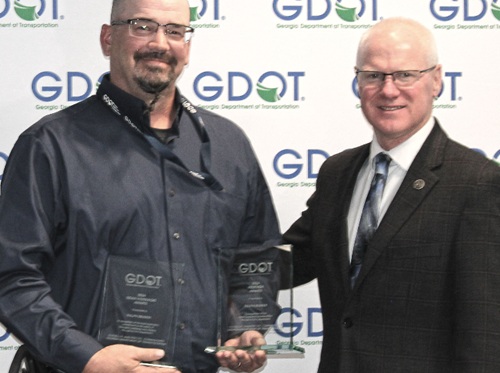The Texas Department of Transportation recently created a 40-member task force to help target intersections where the implementation of roundabouts could help reduce fatalities and injuries related to motor vehicle crashes.
[Above photo by TxDOT]
That task force will use an Intersection Control and Evaluation or ICE process selecting the location of new roundabouts, the agency said; joining 13 other state departments of transportation across the country using the ICE approach to ensure intersection investments address safety and congestion priorities.

“If we want to get to zero deaths on our roadways, we have to look at all kinds of different innovative approaches to reach that goal and roundabouts are certainly one way to do that,” said Brandye Hendrickson, TxDOT’s deputy executive director for planning and administration, in a statement.
Other states using ICE include Pennsylvania, Florida and Hendrickson’s native Indiana, where she served as commissioner of the Indiana Department of Transportation.
She noted that the ICE process will encourage traffic engineers to consider roundabouts and other design alternatives for roadway intersections; edging away from the “status quo” of implementing traffic signals in response to intersection safety issues.
“I got a chance to drive roundabouts in the communities where I live and that I serve,” she said. “It really opened up my eyes to the safety impacts and benefits that come along with these innovative intersections.”
TxDOT noted that roundabouts lessen the potential for collisions by forcing drivers to slow down and yield to those already in the circle while also reducing the most severe types of intersection crashes such as right-angle and head-on collisions.
Other innovations include Reduced Conflict U-Turns characterized by the prohibition of left-turn and through movements from side street approaches as permitted in conventional designs. RCUTs reduce fatal and injury crashes by up to 63 percent, according to data from the Federal Highway Administration.
[Editor’s note: A new FHWA report highlights the potential safety benefits of ‘turbo roundabouts’ in the Czech Republic, Poland, and the Netherlands.]
“We can’t keep doing the same thing with our designs and expect different results,” noted Mo Bur, TxDOT’s director of project development. “Thirty-two percent or a third of our fatal and injury crashes in Texas take place at intersections.”
“There is a lot more to installing a roundabout than the simple circle would suggest,” added Amanda Austin, who serves as TxDOT’s “RAID” lead; short for “Roundabout & Alternative Intersection Design.”
And while good curvatures to slow vehicles and proper signage and pavement markings are the hallmarks of a good roundabout, such installations require fine-tuning to accommodate urban, rural or metro settings.
“You need it just big enough to accommodate trucks but not so big that people can drive too fast through it,” Austin noted. “There’s a lot of nuances. That’s why we’re going to have an entire class on how to design roundabouts.”
 States
States
Georgia DOT Foreman Receives Two Heroism Awards
January 2, 2026 States
States

